A sacrifice branch is any branch that assists in the development of a tree, but will not be part of the final design.
Sacrifice branches are most commonly used to thicken the trunk. When the trunk reaches the desired size, the branch is removed.
Some bonsai are developed with one sacrifice branch at a time. When the branch’s job is done, it is removed and a new sacrifice branch is selected.
It’s also possible for multiple sacrifice branches to grow on a tree at the same time. The pine below is an example of this. It’s benefited from a total of six sacrifice branches.
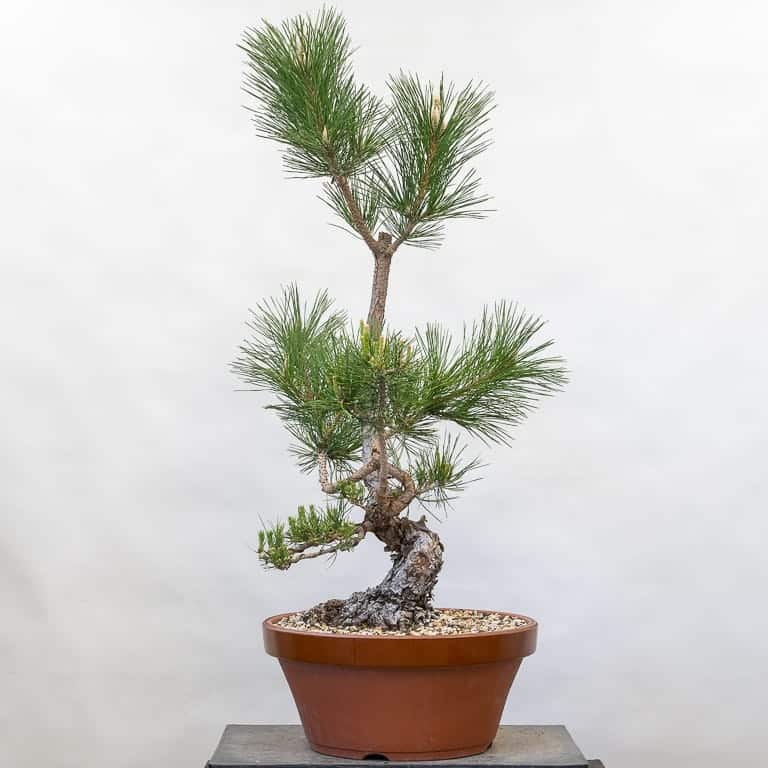
Fifteen year-old black pine – 40″ tall
The first sacrifice branch thickened the lowest part of the trunk. This branch grew for 3-4 years before I removed it. The scar is almost closed.
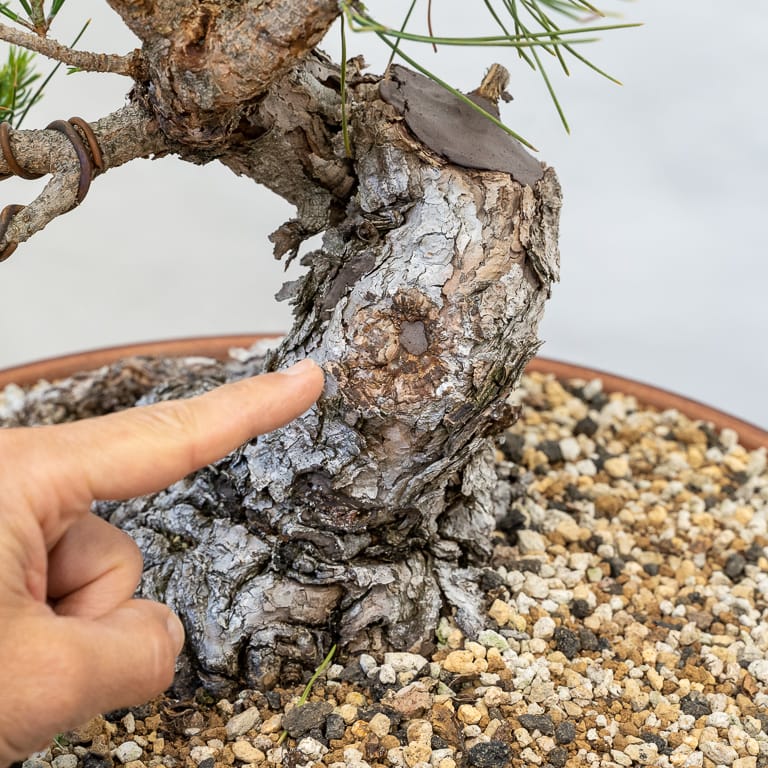
Location of sacrifice branch #1
The second sacrifice branch was located just above the first. It grew for 6-7 years before I removed it. At one point it was over five feet long.
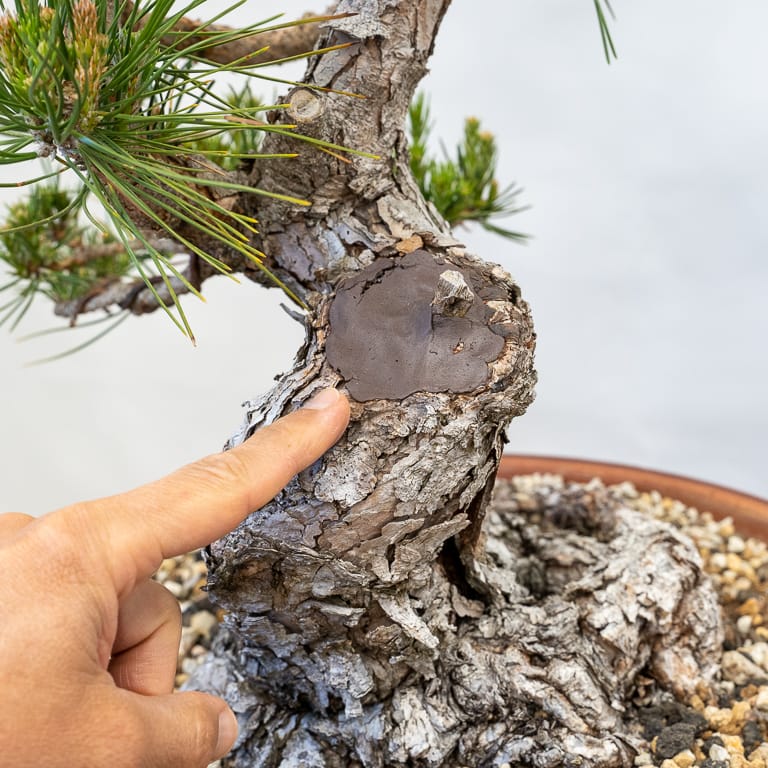
Location of sacrifice branch #2
The third sacrifice branch is currently the largest on the tree. It’s been growing for 5-6 years. I plan to remove this branch in 1-2 years as I don’t need the trunk to grow much thicker below this point.
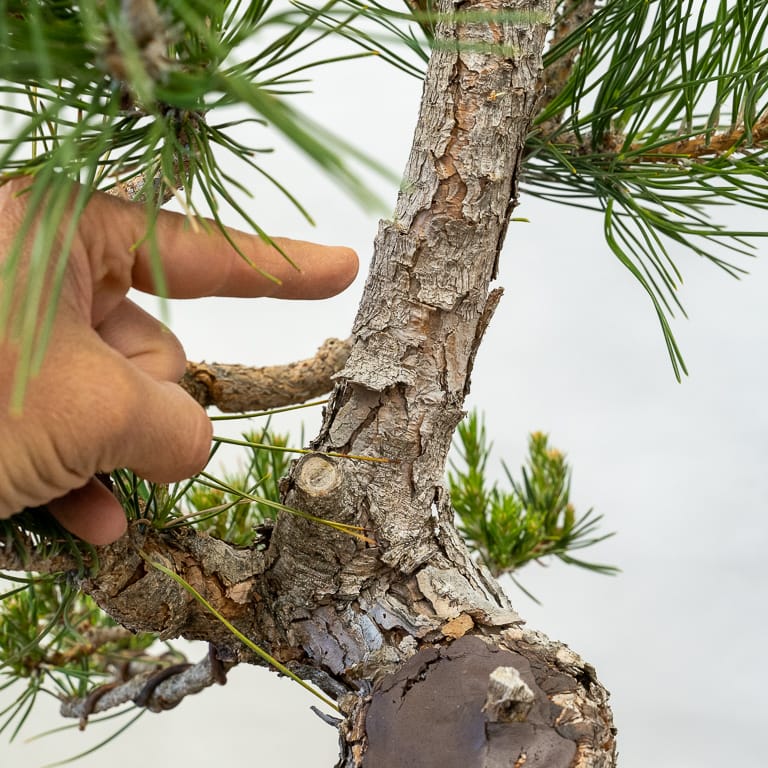
Sacrifice branch #3
The next sacrifice branch emerges close to branch #3. It’s now three years old. I plan to let it grow for 2-3 more years.
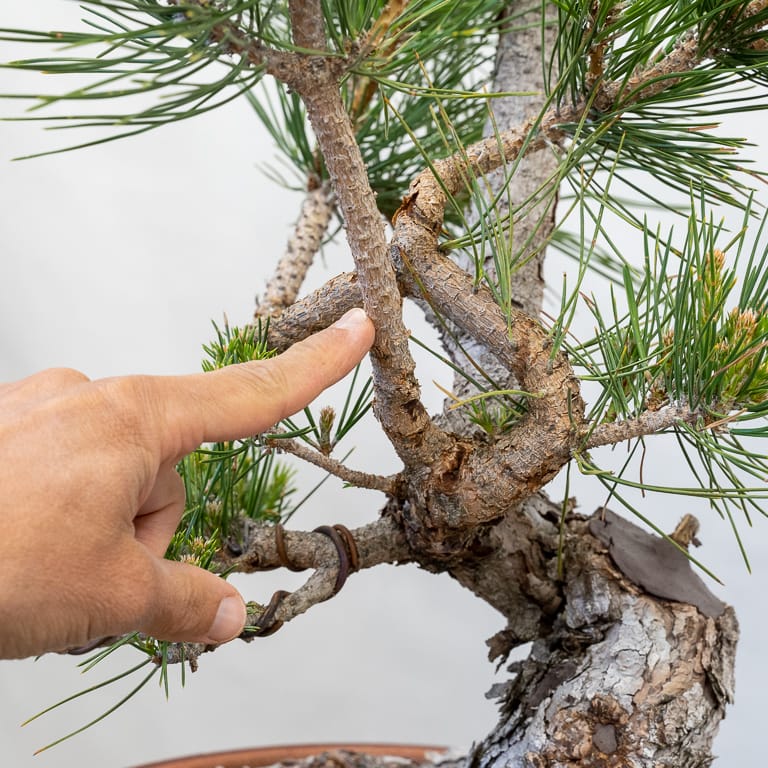
Sacrifice branch #4
The fifth sacrifice branch grows downward before bending upward. When I wired the tree in June, I pointed the tip of the branch toward the sun so it would gain vigor.
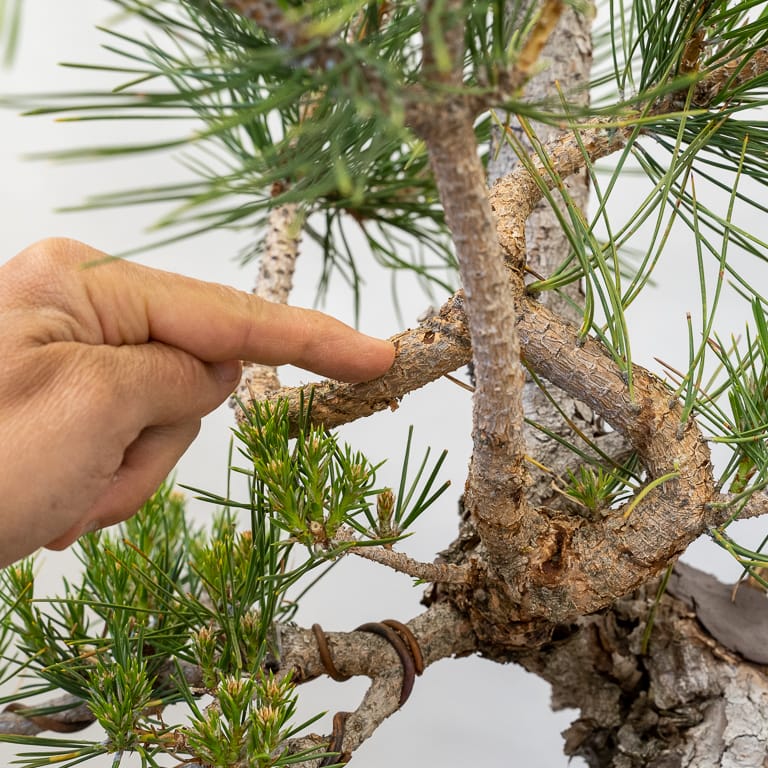
Sacrifice branch #5
I expect the sixth sacrifice branch to be the last major sacrifice branch on the tree as I haven’t identified other areas of the trunk that need thickening.
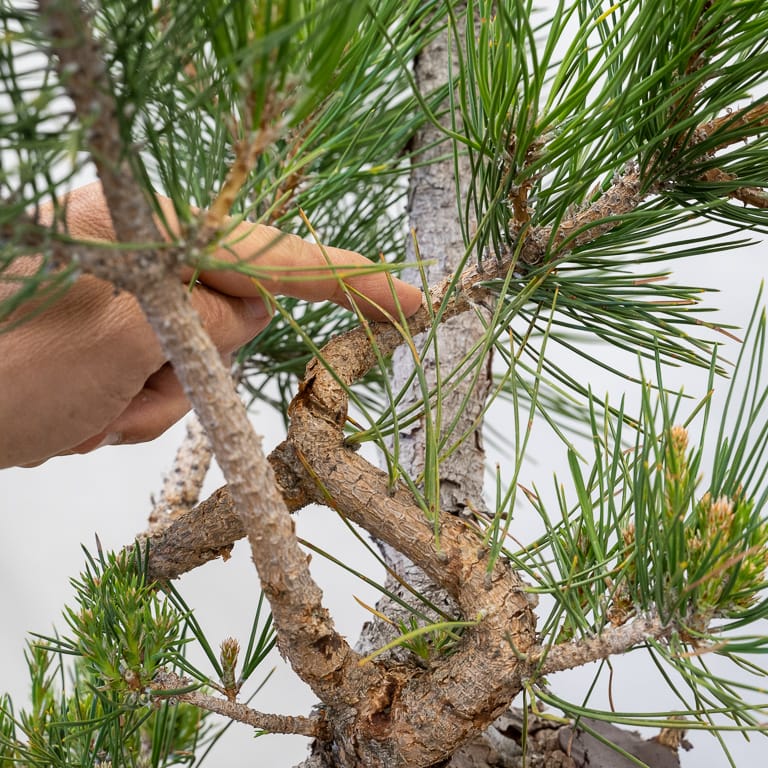
Sacrifice branch #6
Below is a shot indicating the future apex. I plan to cut here in 1-2 years when the top two sacrifice branches have finished thickening this area.
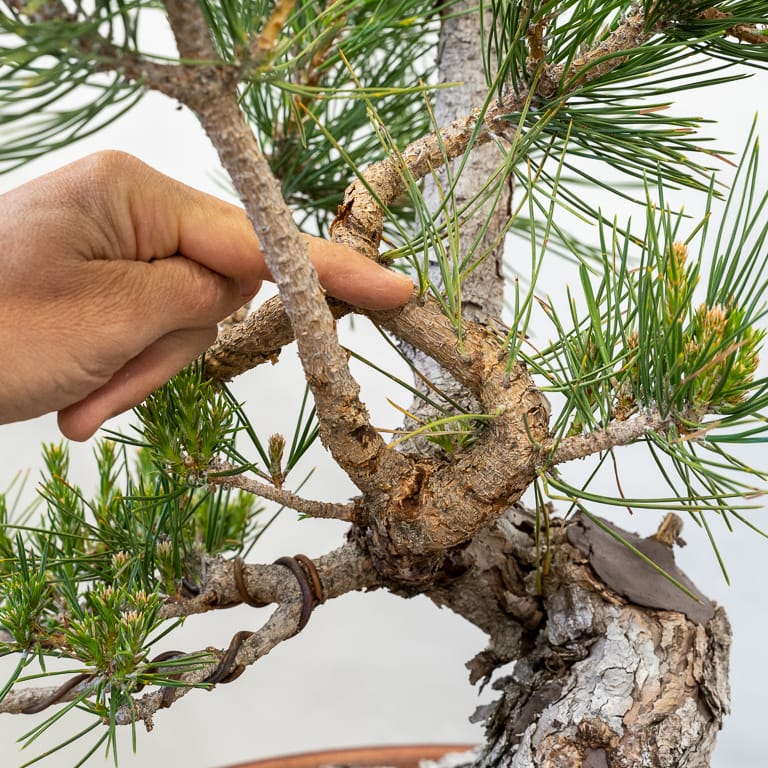
The future apex will be in this area
When using sacrifice branches to create bonsai, I don’t make detailed plans about the role of each branch. Instead, I evaluate the branches that developed during the previous growing season and make plans from there.
I had no idea where I was going with this tree until one or two years ago. What I did know is that I prefer curved growth to straight growth so I made sure to wire new shoots before letting them thicken.
And although I have a rough plan for the rest of the design, I’ll make any future decisions about what to prune and what to keep based on how the tree develops over the next few years.
Subscribe to Bonsai Tonight
New Posts Delivered Every Tuesday and Friday
James says
Jonas,
If there are several branches growing from the same area of an intended (whorl-like?) sacrifice branch should they be reduced to one or left alone? Will reducing the branching increase the thickening of the area below ?
thanks,
James
Jonas Dupuich says
Great question James. If the whorl is located mid-way along the sacrifice branch, you can keep all of the branches. Thickening will be fastest if you leave as much foliage on the sacrifice branch as possible. I usually thin sacrifice branches after a year or two as it allows more sunlight to reach the branches below and makes the foliage less hospitable for insects. (It also makes the tree less tippy on the bench.)
Darth Masiah says
I really appreciate these JBP development posts.
Jonas Dupuich says
Thanks!
Drew says
Hi Jonas,
Regarding the future apex site, are you hoping the needle pair your finger is pointing at will still be there to cut back so you can build an apex out of a needle bud? what would you do if that needle pair drops off for some reason? or is there a node in that area you plan to cut back to?
Jonas Dupuich says
Thanks Drew – that’s the question I’ve been asking. My guess is that I’ll have to cut back to this area next spring at decandling time. It’s the best way to guarantee that I get new buds in this area. The other options are to a) cut back hard above this area and hope a bud pops, or b) wait a few years and then graft.
As for the specific site for the new bud, any growth in this area will do as I can bend it into position. The buds near my finger in the photo are all good candidates for the future apical branches.